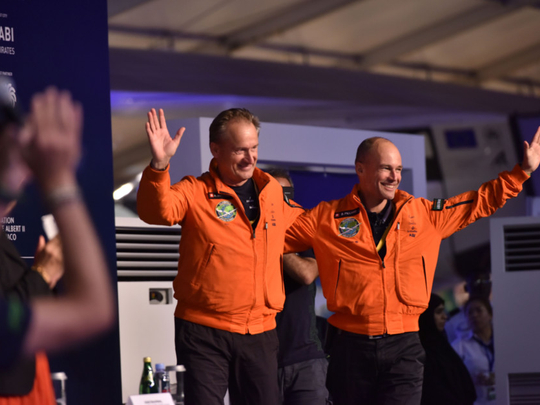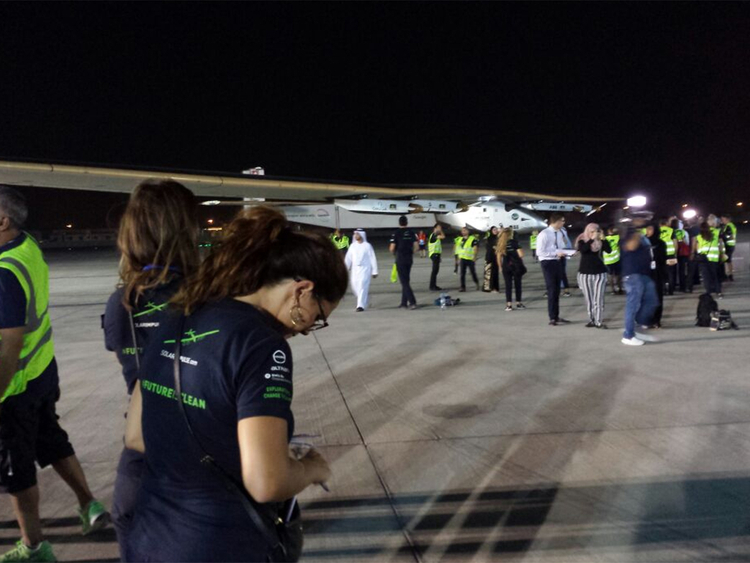
Abu Dhabi: Flying for days at a stretch in a single-seater aircraft whose cockpit does not allow one to stand up was a tough task for the two pilots of Solar Impulse 2 (Si2), a zero-emission electric and solar aeroplane, which completed its global circumnavigation on Tuesday.
The 3.8 cubic metre unpressurised and unheated cockpit was just enough for a solo pilot. The pilot’s reclining chair allowed some body stretching and its cushion could be moved for accessing the toilet.
And there was no proper sleep, just naps. “We were able to take just a 20-minute nap [at a stretch],” André Borschberg, CEO and Co-Founder of Solar Impulse, who was the co-pilot of the iconic aircraft, told Gulf News. He used to take two or three naps in between one and four hours. The aeroplane is put on autopilot mode during the pilot’s nap. “But we always get wake-up calls [from the control centre], because sometimes autopilot does not work. There may be weather turbulences.”
Specially designed goggles used to flash lights on their eyes as wake-up calls. When the plane was not at flying level, armbands underneath their suits would buzz as an alarm.
Borschberg used to practise yoga to keep fit. For his co-pilot and chairman of Solar Impulse, Bertrand Piccard, self-hypnosis was the key to keeping energetic. “Self-hypnosis allows me to give complete rest to body, while the mind is totally alert to the surroundings,” he told Gulf News.
The pilots, who took turns to pilot the aeroplane on their global trip, were given specially prepared food during their flight.
Borschberg said yoga and naps helped him during the toughest flight of the Pacific crossing from Japan to Hawaii, which took almost five days. “It was very challenging.”
The global trip covered more than 40,000km in 17 stages. Around 25 days flying across the globe meant around 500 flying hours.













